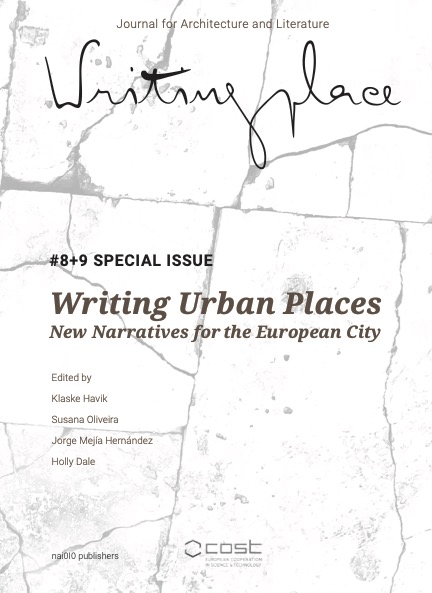Çanakkale
Travelogues of a Sentimental Journey through Çanakkale, Turkey
DOI:
https://doi.org/10.7480/writingplace.8-9.7258Abstract
Çanakkale is a mid-size city on the Dardanelles Strait. It is generally known as the Second World War battleground of the Gallipoli Campaign, when the British Empire and France failed to capture Istanbul as the Ottomans used geographical features to their advantage. Çanakkale also sits in the region that is believed to be the same as ancient Troy, whose destruction is featured in Homer’s Iliad and The Odyssey. Until the late nineteenth century, the Trojan War was considered to be a fictional event, but then pioneer archaeologist Heinrich Schliemann followed Homer’s geographical descriptions and identified Hisarlık Hill with the help of Frank Calvert as the site of the ancient city. The site is now UNESCO World Heritage, but the line between myth and reality is still blurred. The case study of Çanakkale will thus expand on the grey area of the city’s contemporary physical condition and the mythological potential of its underlying urban narrative as a place of epic significance, a place in which fictional stories overlap with the physical description of the urban and natural environment. The multitude of meanings and symbolism assigned to the city and region of Çanakkale thus prove to be fruitful grounds for the exploration of travelogues’ potential as a subgenre of travel literature that sways between myth and reality, as was shown in the workshop The City and the Myth organized 18-20 July 2022 with the support of the COST Action Writing Urban Places.
References
Anderson, Benedict. Imagined Communities: Reflections on the Origin and Spread of Nationalism. (London-New York: Verso, 1991).
Assmann, Jan. Moses the Egyptian. The Memory of Egypt in Western Monotheism. 1st Harvard Univ. Press pbk. ed. (Cambridge, MA: Harvard University Press, 1998).
Bakhtin, Mikhail. “Forms of Time and of the Chronotope in the Novel.” In The Dialogic Imagination. Four Essays, edited by Mikhail Bakhtin, 84–258. (Austin: University Texas Press, 1981).
Baudelaire, Charles. The Painter of Modern Life and Other Essays. Translated by Jonathan Mayne. (London: Phaidon Press, 1995).
Benjamin, Walter. The Arcades Project. (Cambridge, MA: Harvard University Press, 1999).
Berger, Thomas. “The Power of Memory and Memories of Power: The Cultural Parameters of German Foreign Policy- Making since 1945.” In Memory and Power in Post-War Europe, edited by Jan-Werner Müller, 76-99. (Cambridge: Cambridge University Press, 2002).
Borges, Jorge Luis. Labyrinths; Selected Stories & Other Writings. New Directions. (New York: New Directions, 1964).
Bruno, Giuliana. Atlas of Emotion. Journeys in Art, Architecture, and Film. (London: Verso, 2018).
Chen, Chun-Chu, Yueh-Hsiu Lin, and James F. Petrick. "International Stereotype and the Collective Construction of Destination Image." Tourism Analysis 17, no. 1 (2012): 55-66.
Cicero, Marcus Tullius. Cicero. De Oratore. Translated by Edward William Sutton. The Loeb Classical Library from Old Catalog. 2 vols. (Cambridge, MA: Harvard university press, 1942).
Çiğdem, Zeynep, and Uysal Ürey. "The Use of Orientalist Stereotypes and the Production of Kitsch: Tourism Architecture in Turkey in the Face of Social Change." International Journal of Sport Culture and Science 1, no. 4 (2013): 108-18.
Dundes, Alan. Sacred Narrative, Readings in the Theory of Myth. (Berkeley: University of California Press, 1984).
Ewing, Suzanne, Jeremie Michael McGowan, Chris Speed, and Victoria Clare Bernie, eds. Architecture and Field/Work, Critiques: Critical Studies in Architectural Humanities. (New York, NY: Routledge, 2011).
Farinelli, Franco. Geografia. Un’introduzione Ai Modelli Del Mondo (Torino: Einaudi, 2003).
Foer, Joshua. Moonwalking with Einstein: The Art and Science of Remembering Everything (New York: Penguin Press, 2011).
Forsdick, Charles, Zoë Kinsley, and Kathryn Walchester, eds. Keywords for Travel Writing Studies: A Critical Glossary, Anthem Studies in Travel (London-New York: Anthem Press, 2019).
Garaeva, Gulnaz. "„Interkulturalität?“ Oder: Kritische Überlegungen Zu Interkulturellen Aspekten Des Tourismus." 4, no. 2 (2012): 209-20.
Gleber, Anke. The Art of Taking a Walk : Flanerie, Literature, and Film in Weimar Culture (Princeton, NJ: Princeton University Press, 1999).
Hazel Hahn, H. "The Flâneur, the Tourist, the Global Flâneur, and Magazine Reading as Flânerie." Dix-Neuf 16, no. 2 (2012/07/01 2012): 193-210.
Knabb, Ken. Situationist International Anthology. Berkeley, CA: Bureau of Public Secrets, 2006. Mac Sweeney, Naoíse. Troy: Myth, City, Icon. Archaeological Histories. (London-New York: Bloomsbury, 2018).
Marschall, Sabine. "Tourism and Remembrance: The Journey into the Self and Its Past." Journal of Tourism and Cultural Change 12, no. 4 (2014/10/02 2014): 335-48.
Morley, David. "Belongings: Place, Space and Identity in a Mediated World." European Journal of Cultural Studies 4, no. 4 (2001/11/01 2001): 425-48.
Resta, Giuseppe, ed. The City and the Myth. (Melfi: Libria, 2022).
Ross, Kristin, and Henri Lefebvre. "Lefebvre on the Situationists: An Interview." October 79 (1997): 69-83. http://www.jstor.org/stable/778839.
Ruskin, John. The Elements of Drawing. (London: Smith, Elder, & Co., 1857).
Sterne, Laurence. A Sentimental Journey through France and Italy. (London: T. Becket and P. A. De Hondt, 1768).
Urry, John. The Tourist Gaze: Leisure and Travel in Contemporary Society. (Thousand Oaks: Sage, 1990).
Vachon, Marc. "From Flâneur to Arpenteur." Prairie Perspectives: Geographical Essays 7 (2004): 44-56.
Virilio, Paul. The Vision Machine. (London: British Film Institute, 1994).
Voet, Caroline, Eireen Schreurs, and Helen Thomas, eds. The Hybrid Practitioner: Building, Teaching, Researching Architecture (Leuven: Leuven University Press, 2022).
Downloads
Published
How to Cite
Issue
Section
License
Copyright (c) 2023 Giuseppe Resta, Sonja Novak

This work is licensed under a Creative Commons Attribution 4.0 International License.



